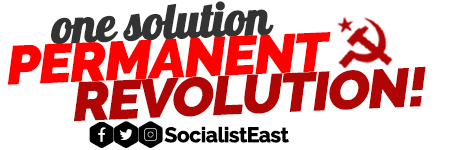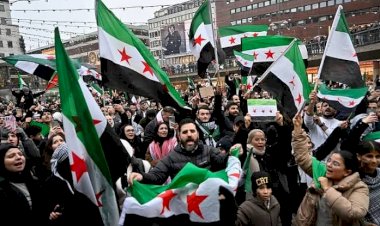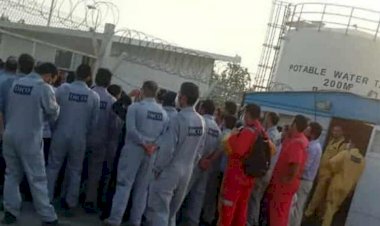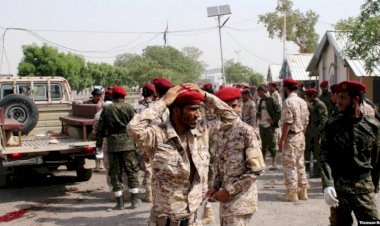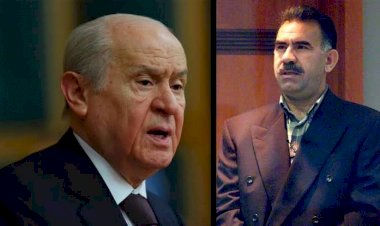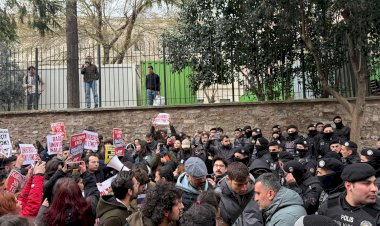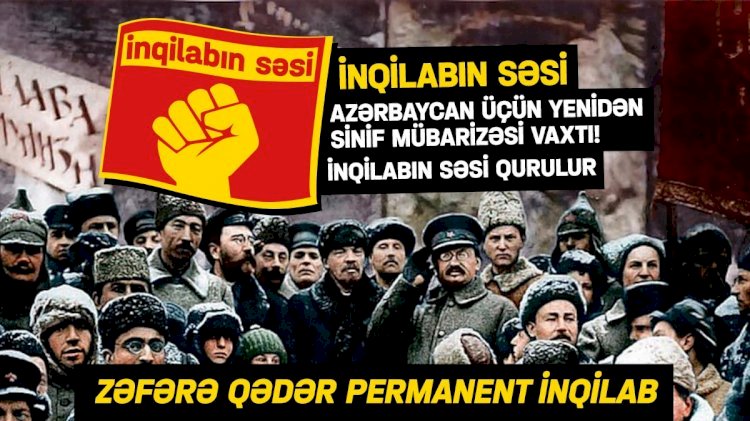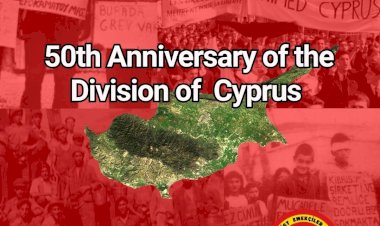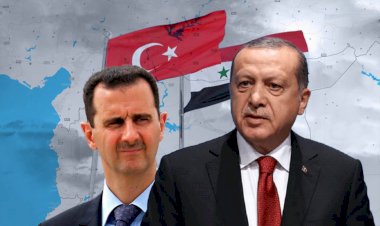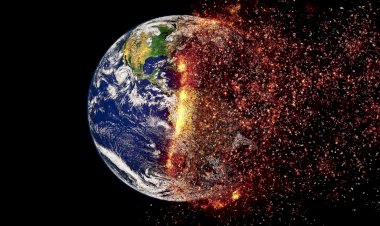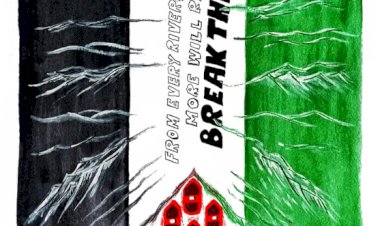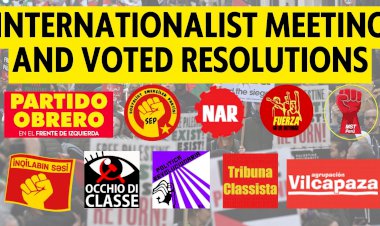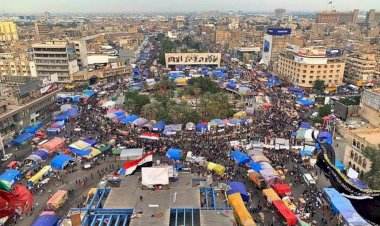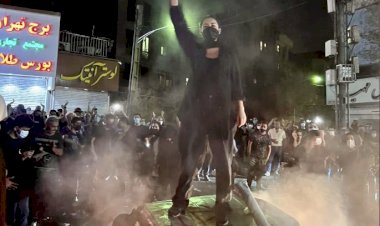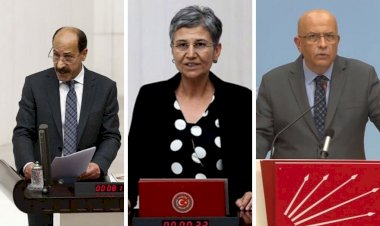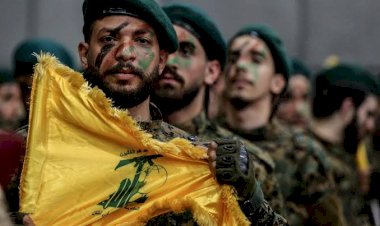Bolsheviks' Policy of Ukraine: Revolutionary Leap Turning Into Its Opposite
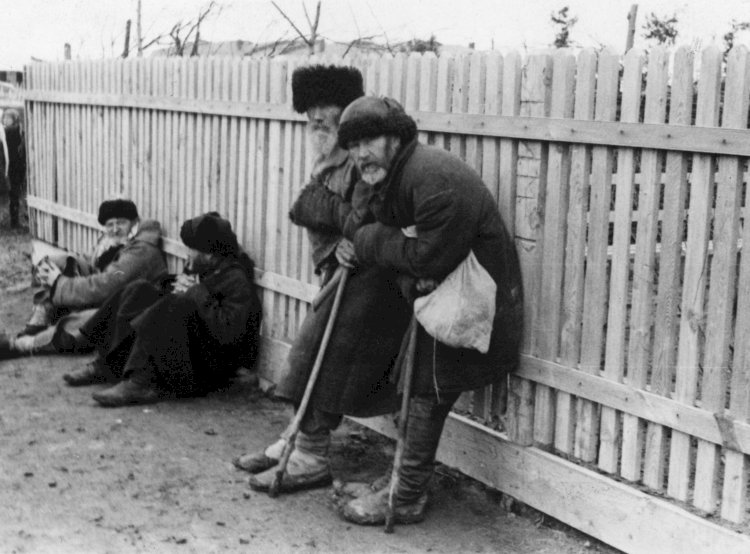
When Putin said "Ukraine is not a real country", he had already had set his mind on his plan, which was daring for some and lunatic for others. Clearly, according to Putin, Ukraine has no right to exist as an independent country and a state: “This process began practically immediately after the 1917 revolution, and moreover Lenin and his associates did it in the sloppiest way in relation to Russia — by dividing, tearing from her pieces of her own historical territory.”
We know that Putin, the leader of the nationalist imperial tradition and monopoly capital in Russia, sees Lenin as a traitor and the October Revolution as a conspiracy of foreigners. They are already propagating this about the October Revolution in the Russian media and official programs. The worst example of this reactionary propaganda was the TV series called Trotsky, shot by the Russian state channel. In this series, each of the Bolsheviks was portrayed as psychopaths on different levels…
What Really Happened in Ukraine?
The key to the situation was that the Bolsheviks who led the October Revolution were keen internationalist revolutionaries. Lenin and his comrades sympathized with the nations oppressed by the Tsarist regime, opposed religious and national oppression, and detested Tsarist expansionism and Great Russian chauvinism. Years later, the pictures of the Tsarist generals hanging in Stalin's study room (from the book Molotov Remembers by Feliks Ivanovich Chuev) were an expression of how sharply the revolutionary leap had turned into its opposite. Yet liberals, anarchists – and by the way, Stalinists – keep telling the fabrication that Stalin is not different than Lenin.
Lenin defends the right of oppressed nations to self-determination, including the right to secession; he was taking the position of "revolutionary defeatism", preferring the defeat of Russia in the first great imperialist war. The smears of Lenin being a "German agent" became the biggest propaganda campaign of Russian nationalists. As a result, Tsarism, which was defeated in the imperialist war, was overthrown in February 1917, and in October the Soviet of Workers' and Soldiers' Deputies came to power under the leadership of Lenin.
Independence of Ukraine
After the October Revolution, the Ukrainian nationalists declared their independence in Kyiv, with a resolution passed in their "national" assembly, the Rada. But as a result of national wars on the one hand and class wars on the other, this bourgeois republic was destined to be short-lived. On the one hand, the Austro-Hungarian Empire wanted to seize the Ukrainian lands, which was the granary of grain that it needed so much; on the other hand, the Polish nationalists, who re-established their own state after about 125 years, claimed rights over Ukraine and took occupation actions. With the Treaty of Brest-Litovsk signed in 1918, most of Ukraine was ceded to Germany and Austria-Hungary, but this treaty became void as the Allies lost the war. On the other hand, Denikin, one of the Tsarist generals who opened a strong southern front against the Red Army through Ukraine, never made any concessions of his Russian chauvinism. On the other hand, there was a struggle among the left; Bolsheviks, anarchists, and SRs (Socialist Revolutionaries-Narodniks). The Bolsheviks were strong in the industrial centers of eastern Ukraine, among the predominantly Russian working class. Ukrainians, on the other hand, were a predominantly peasant nation. The sizable Jewish minority in Ukraine had raised important communists, including Trotsky, and they could not avoid being slaughtered during the civil war years.
Soviet Ukraine and the USSR
Following October 1917, the Bolsheviks rose up in Kyiv but were suppressed by the bourgeois nationalist forces. The Bolsheviks then turned east and retreated to the industrial centers in Kharkiv, where in December the Ukrainian Soviet Republic would be established. But the White Army overthrew this power by the end of 1918. After years of civil war and foreign invasions, the Bolsheviks finally regained control of Ukraine in 1922.
How would the nations’ policy of the Soviet regime, which seemed to have stabilized a bit after the civil wars? What would the state structure be like? In Lenin's mind, the answer to these questions was clear. The Soviet Union was to be a union of socialist republics with equal rights. According to Lenin, the project of the Soviet republics should not be in the form of joining the Russian Federation, but in the form of the unification of equal republics. He argued that such a union would also be effective in protecting non-Russian nations from capitalist imperialism. In other words, the Russian Soviet Socialist Republic and the small Estonian Soviet Socialist Republic would have the same rights. Centralization would be the mainly case in foreign policy and the Red Army, and in other matters, the self-management of the socialist republics would be the decisive principle, accompanied by democratic planning.
The Ukrainian Soviet Socialist Republic was one of the 15 republics that made up the USSR. Thus, when the USSR collapsed in 1991, the legal basis for the independence of these 15 republics emerged. This was the legal basis of the present Ukrainian state. But, for example, since Chechnya was an "autonomous soviet socialist republic" within the Russian SSR, it turned into an autonomous republic affiliated to Russia after the USSR, and could not become independent. Similarly, the Nakhchivan Autonomous Soviet Socialist Republic was an autonomous region within the Azerbaijan SSR, and after 1991 it was not independent but attached to Azerbaijan.
Ukrainianization and Korenezitsia
While determining the borders of the Ukrainian Soviet Socialist Republic, the industrialized Donetsk basin, whose population is mostly Russian, was also included in Ukraine. While Putin sees the establishment of different republics on lands historically entitled to Russia as "betrayal", he is obviously also angry at the widening of Ukraine's borders. But the Bolsheviks and Lenin did more than that.
Bolshevik government rolled up its sleeves to reverse the Russification policy of centuries. The name of the policy was Korenezitsia, that is, endenization-localization. This policy envisaged the strengthening of local languages, culture, art and erasing the traces of the Russification policy. The official state policy of the Soviet Union was still the world revolution, and in this context, the equality and fraternity of nations had to be ensured in the Soviet Union first and foremost. The international unity of the working class would never have been possible otherwise.
With the policy of Korenezitsia, a different period has opened in Ukraine. Local leaders should be chosen from among Ukrainians if possible, communists who do not speak the Ukrainian language should learn it. Special schools were opened to train Ukrainian military and civilian leaders. The Ukrainian alphabet was the first created by Ukrainian communist leaders. Newspapers, theatres, all forms of culture, and art in the Ukrainian language boomed during this period. But this period would not last long.
Everything Turns Upside Down with the Victory of Stalinism
Lenin's final fight was against the rising bureaucracy and its leader, Stalin. When the social base of the workers' power was dissolved during the years of civil war and siege, the Bolsheviks, who had no chance to surrender the country to the counter-revolution, inevitably integrated with the power and the state apparatus in order to keep the new regime alive. In the years when the party meant everything, but also in those years when the composition and character of the party changed, Stalin formed his own secret faction within the party and advanced step by step. During the war years, when the dynamism of the proletarian grassroots that would stop bureaucratization was exhausted, the working class ceased to be even a sociological group, cities were abandoned, and starvation hit the country, Stalin had placed his own team in key positions within the state apparatus. The bureaucracy continued to rise as a privileged stratum whose interests were hostile to the revolutionary interests of the working class.
As Stalin strengthened, he became a determined and confident figure to take his own way. He was in a position to even risk "careful" frictions with Lenin, who was still active in politics. But the issue reached the breaking point on the national question because Stalin was in sharp contrast to Lenin's internationalist projects and principles. First of all, Stalin was a strict centralist. He wanted to make other republics part of the Russian Soviet Socialist Federation. As a matter of fact, when the Georgian communists, with the support of their Ukrainian comrades, opposed Stalin's suffocating impositions and the idea of federation, Stalin and his men tried to intimidate the Georgian communists by all means, including physical violence. When the Georgian communists asked Lenin for help, Lenin supported the cause of his comrades and got into a fierce fight with Stalin. He accused Stalin of being the big Russian bully.
Stalin had to retreat. As a matter of fact, on December 30, 1922, the USSR was declared as a union of equal republics. But Lenin was not going to be content with that because he had realized how great the danger was. He was determined to liquidate Stalin. According to Lenin, two great dangers threatened the Soviet Union: bureaucratization and Great Russian chauvinism. The focus of both of them was the same person: Stalin. Even in his sickbed, where he was isolated for health reasons, Lenin continued his struggle against Stalin. But Lenin's health would not allow this final and perhaps the most critical fight, and the third of the attacks he had survived two times would have ended his political life. The Soviets continued as the Union of Socialist Republics but with the death of Lenin and Stalin's takeover, the powers of these republics were reduced to the symbolic level. Georgian communist leaders, such as Makharadze, Mdiviani, and Tsintsadze, who greatly annoyed Stalin, were killed in the 1930s.
The 1930s, Russification and the Great Purge
After the administrative structure of the Soviet state was settled in the form of strict centralism, similar to Tsarist Russia, Stalin did not stop and returned to the VelikoRussian policies of Tsarist Russia. Communist leaders such as Shumsky and Skyripnik, who implemented the Ukrainianization policies with Lenin, and local communists were first purged from the party on accusations of nationalist heresy. They were then executed during the Great Purge, which began in 1936. The expulsion of the communists of the oppressed nations from the party apparatus due to the accusation of nationalist deviation had already begun in the 1920s.
In the 1930s, a major attack on the cultural sphere would begin. The Russian language was the dominant language and the Ukrainian language was only a folkloric element. Newspapers, publishing houses, and schools once operating in the Ukrainian language were now dominated by Russian. The Russians were described as the "big brother" among other nations in the Soviet Union. For example, when Nazım Hikmet ( a famous Turkish poem) visited Azerbaijan in 1957, spoke and read poems in Turkish at various meetings and conferences, he disturbed bureaucrats. Nazım Hikmet was able to undertake such a task because there was no longer Stalin and it became possible to make contradictory voices during the Khrushchev era although it took a lot of courage. This example of the extent of Russification pressure in a so-called communist administration also reveals the origins of anti-communism and ultra-nationalism that would later become stronger in the oppressed nations.
Holodomor and WWII
One of the events that feed nationalism and anti-communism in Ukraine is undoubtedly the Holodomor. The forced collectivization in agriculture, initiated by Stalin in 1929, gropingly, suddenly and en masse, would lead to complete disaster. Yet only one or two years ago it was none other than Stalin, who vehemently advocated small private farming and the controlled free market against Trotsky and the Left Opposition's calls for a planned economy, industrialization, and collectivization in agriculture. But just as Trotsky had warned, when a major economic crisis and famine broke out in 1928, Stalin forcibly confiscated the grain from the farmers. The Red Army was used against the peasants and riots and bloody clashes broke out. Stalin's reaction to the resistance of the peasantry was total collectivization. This time, the small villagers put up a passive resistance and planted only enough wheat for themselves, and the fields were left empty. Also, in case of their animals were to be confiscated, the villagers responded by slaughtering their animals. Tens of millions of animals (cows, sheep, horses, pigs) were slaughtered, so much so that it wasn't until the late 1950s that the Soviets regained their 1928 livestock population. As a result, agriculture and animal husbandry collapsed in the USSR between 1930 and 1933, and the arid climatic conditions aggravated the situation. As a result, a great famine with mass deaths ravaged the steppes of the USSR. Millions of people died from malnutrition and diseases. Stalin's response to famine was a clear punishment. Ukraine was accused of sabotage and could not receive any assistance while there were mass deaths due to famine. On the contrary, offers of help from the world were rejected, people were prevented from immigrating to other regions, and wheat was exported to other countries. Millions of people died in the process, and Ukraine called this carnage the Holodomor. Thus, an environment was created in which Ukrainian nationalism was heavily fueled. As a matter of fact, since the mid-1930s, Trotsky had been warning about Ukraine, predicting that the Nazis could use this environment to make Ukraine the weak chain for attacks on the Soviets. What had to be done was to give independence to socialist Ukraine. The Workers' and Peasants' Socialist Ukraine would be the guarantor of the implementation of internationalist and revolutionary policies and the struggle against fascism. Of course, the Stalinist apparatus did exactly the opposite of what Trotsky said. After all, the Nazis had no trouble finding collaborators among the Ukrainians in the Second World War. But it was none other than Stalin, who had collaborated with Hitler for the two years before Hitler's armies attacked the USSR in June 1941, in doing so inflicting irreparable damage to the class struggle and antifascist resistance. However, the bill was for the people who were subjected to collective punishment. The Crimean Tatars were punished altogether and exiled to Uzbekistan, although there were many Red Army soldiers and even decorated war heroes among them.
Conclusion
The nationalism of the peoples who were subjected to oppression during Tsarist Russia and the Stalinist regimes had begun to come to the fore in the last years when the USSR was on the verge of disintegration, and it did not decrease after that. This nationalism was accompanied by fierce anti-communism because Communism has been associated with the Russians and with very painful experiences in the memories of people. That is why today to illuminate Lenin and the true tradition of the Bolsheviks is not only the subject of research of history but one of the current tasks of the revolutionary struggle.
